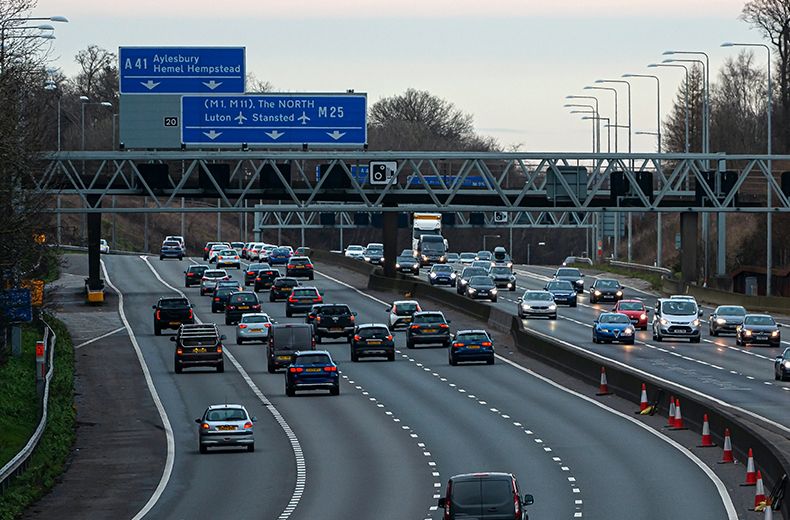A Freedom of Information (FOI) request by BBC Panorama found that, between June 2022 and February 2024, there were 392 reported incidents where smart motorway technology lost power.
The outages include loss of power to overhead signs, signals, sensors and/or CCTV.
Smart motorways were launched in 2006 and use traffic management methods to increase capacity and reduce congestion in particularly busy areas. This method includes using dynamic 'hard shoulders’ as a live running lane, while variable speed limits control the flow of traffic.
These ‘dynamic hard shoulders’ provide an extra lane, controlled by overhead signs – but have been criticised for increasing danger for drivers, rather than increasing safety for all road users. In 2023, the Government halted the roll out of future smart motorways over safety concerns.
Radar and cameras are used to identify broken down vehicles and close live lanes; however, technical problems with smart motorway safety equipment would decrease the likelihood of a broken down vehicle being detected and its occupants rescued.
National Highways, which manages the smart motorway network, has denied the claims of the BBC investigation.
According to the FOI by the BBC, the worst period for technical issues for drivers was the six months leading up to February 2024, where there were 174 reported power outages. This equates to almost one a day across the smart motorways in England.
The longest power outage was junction 14 on the M4, which was without sensor or signals for 11 days.
Across England, there are 193 miles of smart motorways where all lanes – including the hard shoulder – are being used for traffic at all times. There is a further 63 miles where the hard shoulder can be opened up for traffic to ease congestion.
Only 140 miles of smart motorway operate with the hard shoulder in place.
In response to the Panorama investigation, National Highways stated that reintroducing hard shoulders to stretches of smart motorway could increase congestion – and that the agency has contingency plans should there be further power outages.
National Highways Operational Control Director Andrew Page-Dove said: “Safety is our highest priority and our motorways are statistically some of the safest in the world, but there is still work to do as every death is a tragedy and every serious injury a life changed. We need to help everyone feel confident when using smart motorways.
“They were introduced to provide extra capacity on some of our busiest and most congested sections of motorway, and the latest data shows that, overall, in terms of serious or fatal casualties, smart motorways are our safest roads.
“We are taking action to close the gap between how drivers feel and what the safety statistics show by increasing the number of emergency areas, delivering education campaigns, and improving the resilience of our operational technology systems.”
RAC head of policy Simon Williams said: “A colossal amount of public money has been sunk into all-lane-running smart motorways in an effort try to make them safer in the absence of a hard shoulder. This includes retrofitting emergency refuge areas and installing a system to detect stopped vehicles so the ‘red X’ closed lane signs can be switched on as soon as possible to protect vehicles from being hit from behind.
“Sadly, the latest freedom of information data shows all the smart motorway technology is far too prone to failure to keep drivers safe.
“We now find ourselves in a very strange situation where all future schemes have been cancelled by the Government, but all the existing ones remain in operation, much to the anger of drivers who just want to see the hard shoulder reintroduced.
“The hard shoulder is by no means a safe location, but in the event of a breakdown, it is far safer than being stranded in a live lane of traffic waiting for the ‘red X closed lane’ sign to be turned on. Frighteningly, National Highways own data shows that all-lane-running stretches are three times more dangerous than conventional motorways for drivers who breakdown.
“The RAC continues to call on the Government to bring back the hard shoulder on all-lane-running smart motorways or convert them to ‘dynamic’ ones, where the hard shoulder is only opened to traffic at busy periods.
“In either case, technology, such as variable speed limits, that helps smooth the flow of traffic and stopped vehicle detection radar, would remain in place for the benefit of drivers.”

Cheaper than AA or we’ll beat by 20%^
• Roadside cover from £5.49 a month*
• We get to most breakdowns in 60 mins or less
• Our patrols fix 4/5 breakdowns on the spot











